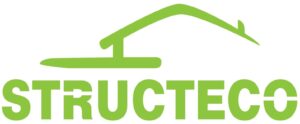Stair SIP Panel
Our stair SIP panel is characterised by its quick and easy installation, combined with a distinct lightness and structural resistance..

An eco-friendly, versatile SIP panel system for building staircases
The stair panel consists of an expanded polystyrene block, shaped according to the design requirements, and sandwiched between two steel wire meshes.
Once this panel is properly reinforced and completely casted in the appropriate spaces, it is ideal to build stairs that can be superficially finished with traditional plaster, tiles, or any finishing materials.
.
Key features
The construction time of a normal single floor staircase reduces considerably when using the stair panel. It also provides a high degree of consistency in the length and the breadth of the stairs.
No cranes required
The panels inherent lightness means they can be carried on site by hand meaning no cranes are required, saving you both time and money.
On-site in-situ casting
The system can be used in precast structures; onsite, in-situ cast structures; and on-site, in-situ spray concrete, depending on your project and needs..
Thermal efficiency
The system eliminates thermal bridging, which helps to reduce energy consumption by limiting the amount of heating and cooling required in a home creating an energy-efficient environment.

Easy to handle with on-site tools
The system is easy to build using on-site tools, including apposite adjustable metal supports and aluminium bars or more traditional building site materials such as wooden boards or square timbers. To ensure static continuity to the structure the panels are connected to the rebars and this can be carried out using suitable equipment or basic site tools such as pliers.
Make a difference and change the way you build today
We know you are under pressure to reduce construction costs and build time, while also building in a more sustainable way. Our building system will provide you with greater speed of construction, a lower carbon footprint and better value than traditional bricks and mortar, steel, or timber frames. So, why not change the way you build today?



